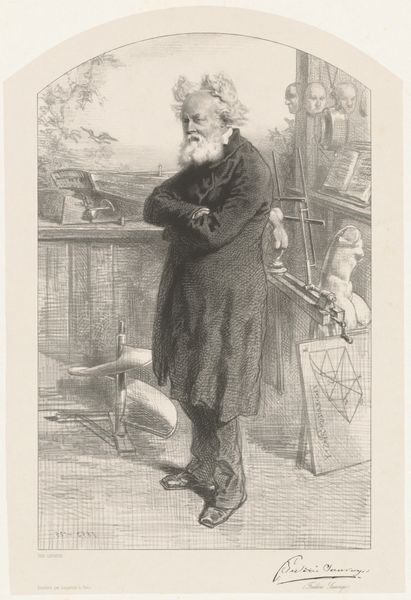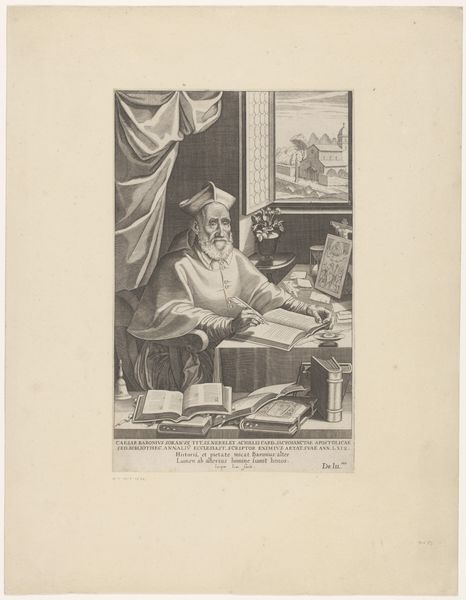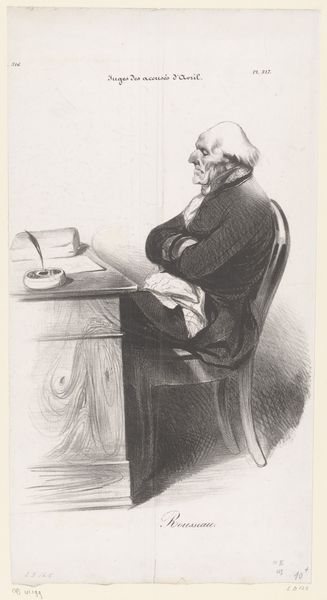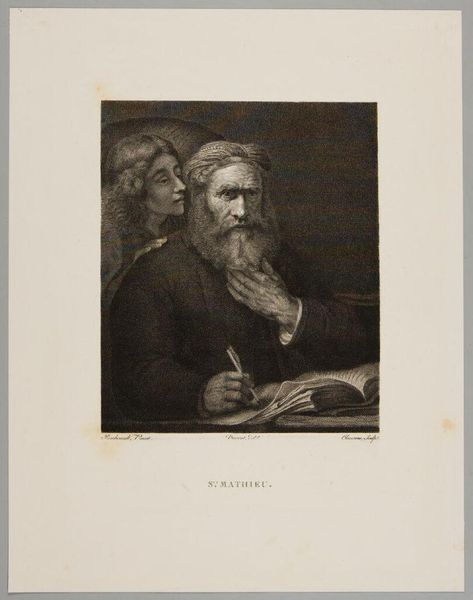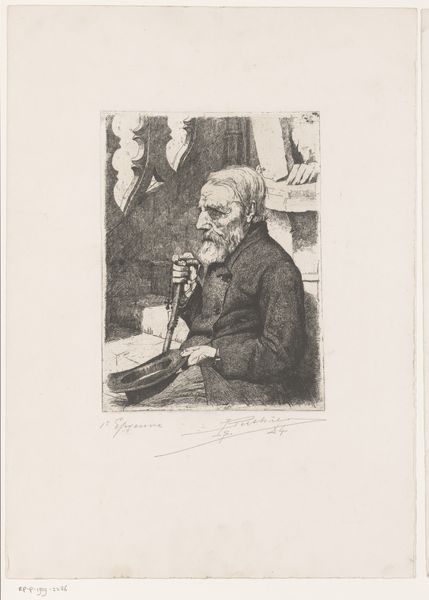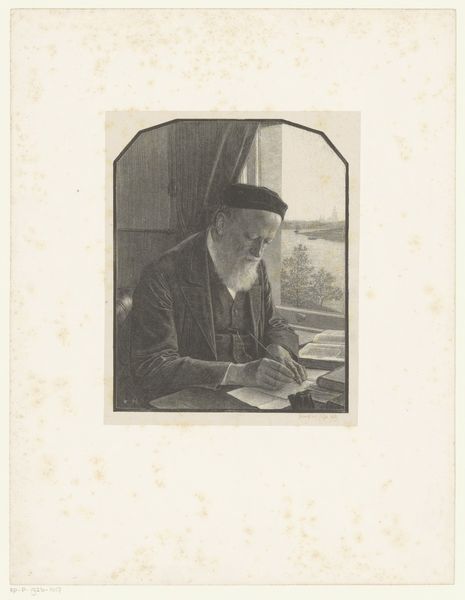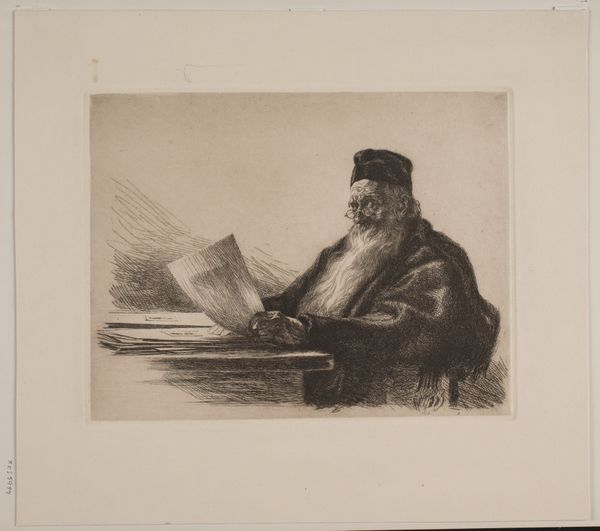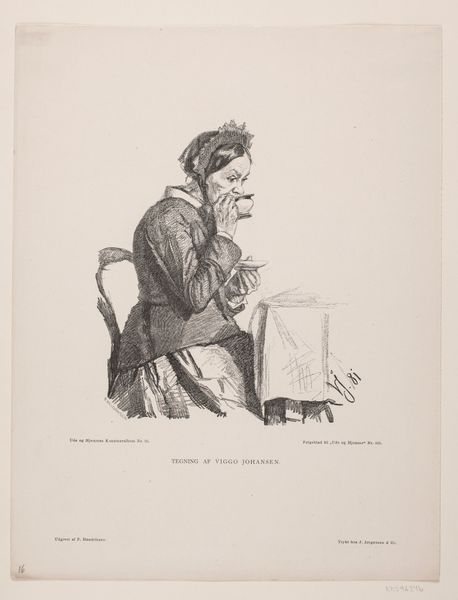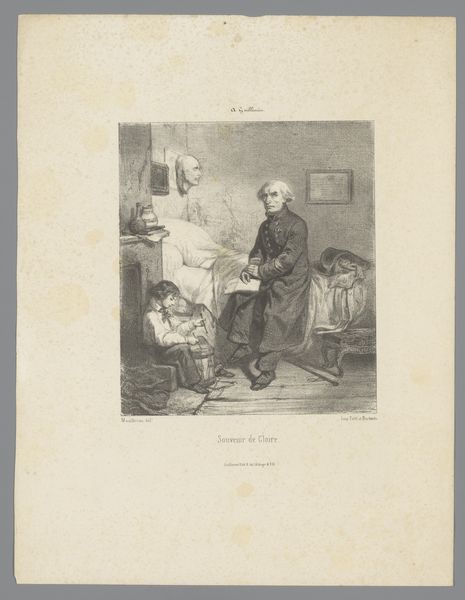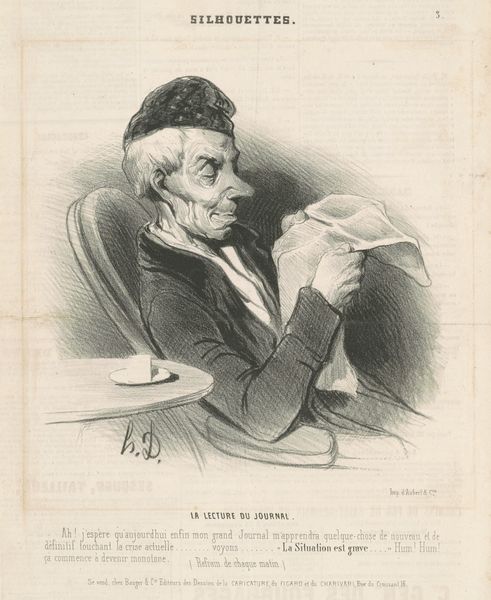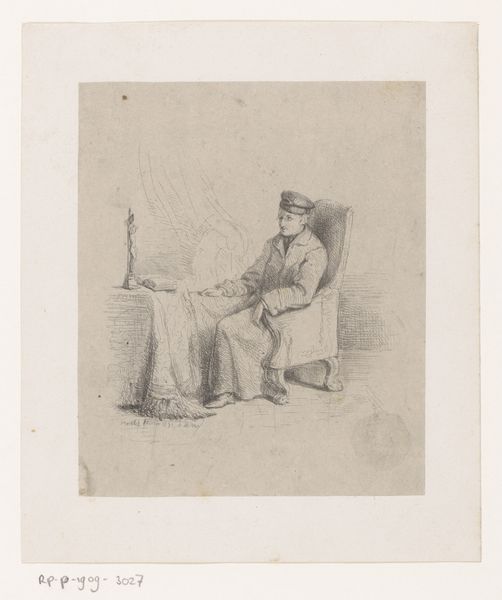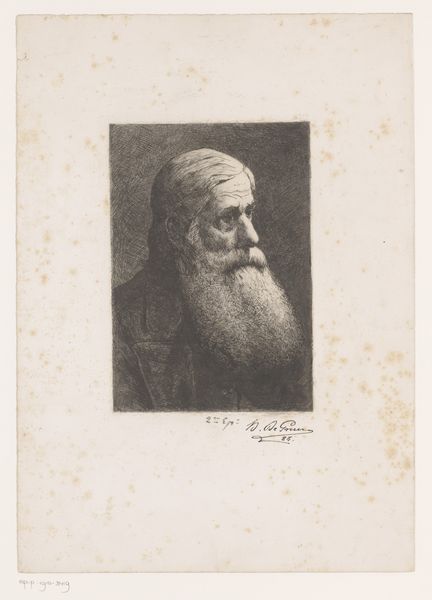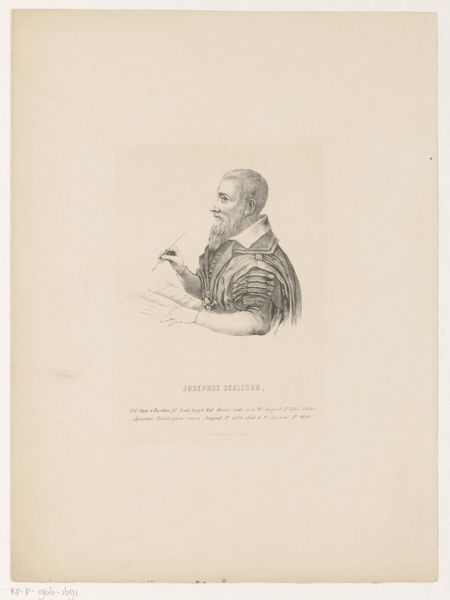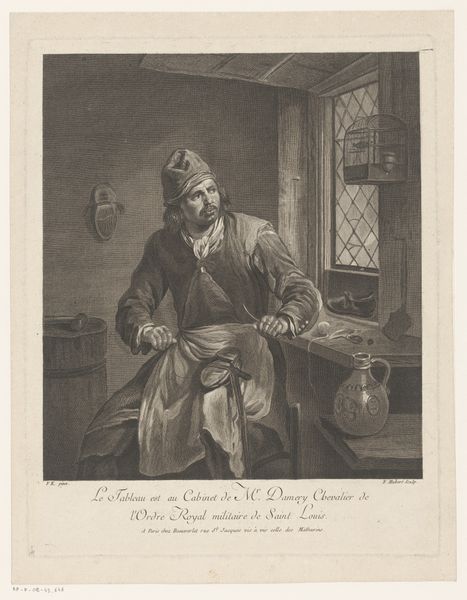
#
portrait
# print
#
genre-painting
#
academic-art
#
realism
Dimensions: height 335 mm, width 255 mm
Copyright: Rijks Museum: Open Domain
Curator: Look at this print, "Portret van Pieter Blussé van Oud-Alblas," dating to 1887. The artist is Jan Holswilder. It immediately strikes me with a remarkable use of line to achieve depth and shadow in a grayscale palette. What is your initial reading? Editor: It's somber. The mood feels rather formal and imposing. The subject looks important, but there’s also a feeling of… resignation, perhaps? The detail around him fades into indistinct background figures, reinforcing his singular presence. Curator: I find the use of perspective compelling, creating depth by subtly adjusting the line's density and weight to sculpt form and create shadow. It has a definite realist approach, yet with an almost academic polish, focusing primarily on the man’s presence. What elements from socio-cultural aspect, could it be indicative? Editor: The image functions, ostensibly, as a genre portrait. The style of dress places Blussé in a position of authority. Consider the timing, 1887, the year he died: this could certainly function as an official memorial, intended for broad distribution. The surrounding people suggests he might be addressing an assembly. Curator: Note the artist’s emphasis is not just on meticulous surface imitation. Look closely at the treatment of the hands and face—it's in how light catches specific contours, accentuating underlying structure that grants presence to the sitter. It certainly is more than likeness. Editor: Yes, the image appeared as part of a periodical. The details offer social and political contexts for the Dutch society of that time. The print makes the personal very public, imbuing Blussé with the gravity expected of a public servant. Curator: Indeed, its technical qualities invite extended inspection to understand its deeper expressive intentions and how successfully they are implemented through visual means. Editor: And to question how the context of its dissemination shaped how the Dutch would come to remember Blussé and, by extension, the values he represented. A very fascinating character, shaped both by artist, publisher and by history.
Comments
No comments
Be the first to comment and join the conversation on the ultimate creative platform.
